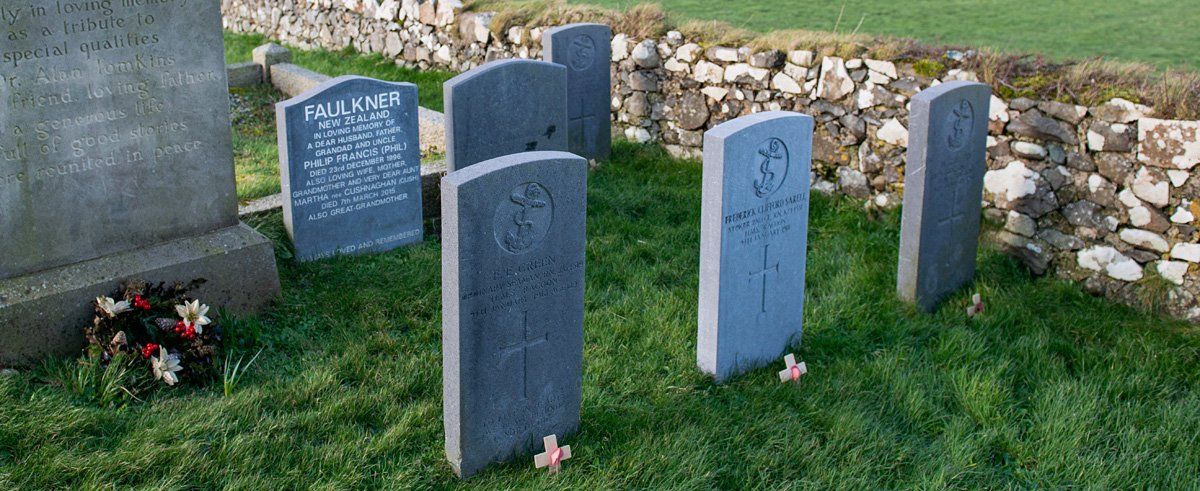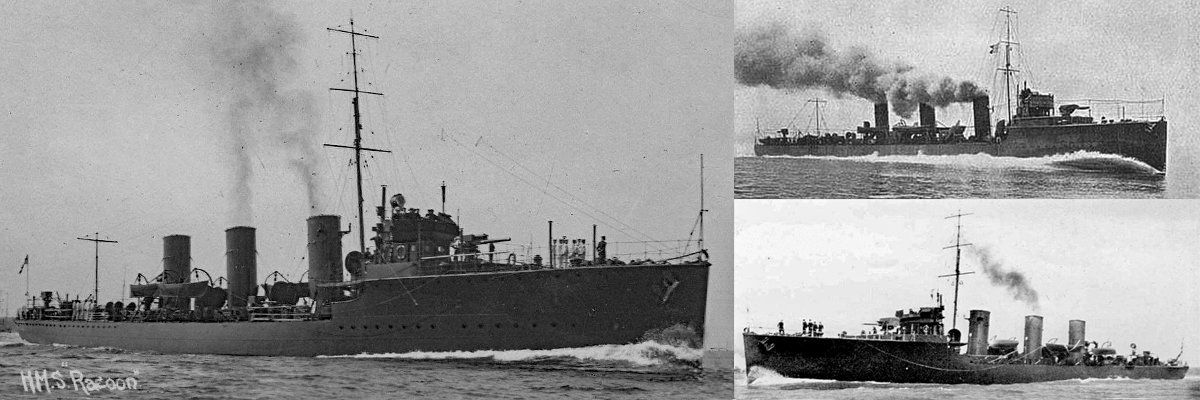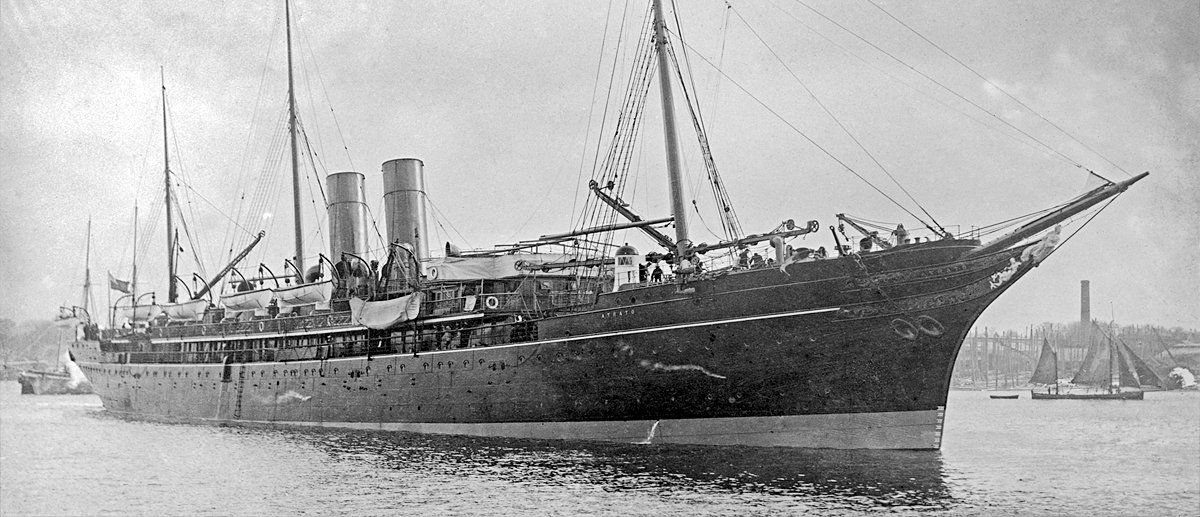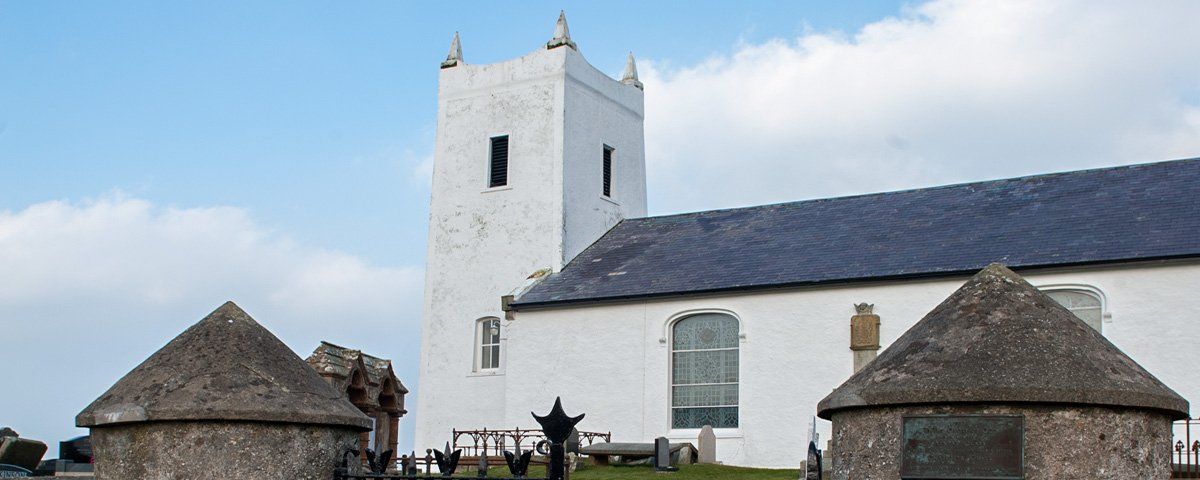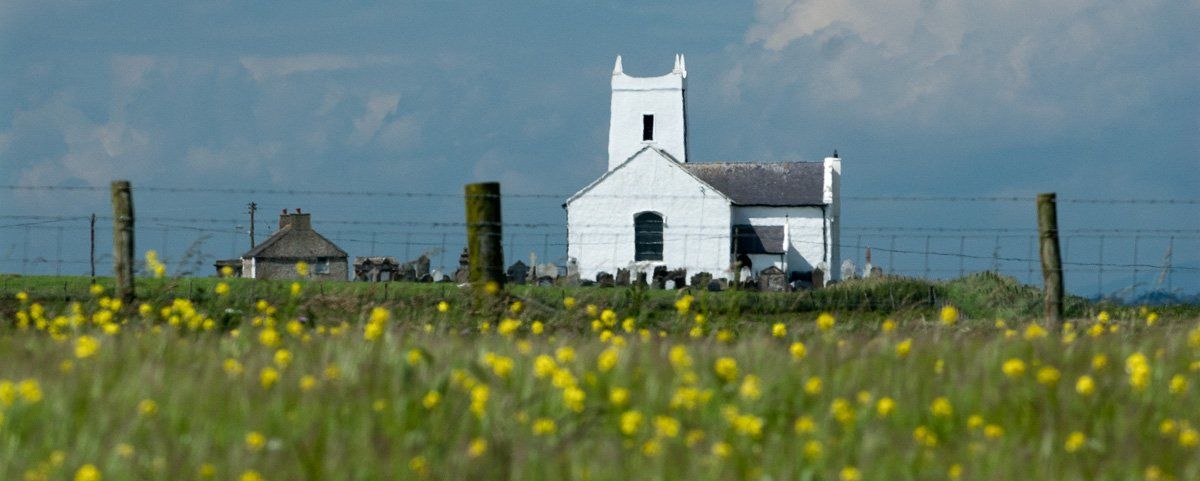This piece came about after discovering First World War graves in Bonamargie Friary, Raghery and Ballintoy relating to the HMS Racoon and HMS Viknor. The freshly placed poppy wreaths in Bonamargie made me wonder about the circumstances which brought these young seamen to their final resting place in a small corner of North Antrim. I had to know more and so I began research in my spare time, this was spurred on by being contacted by a descendent of a relative who was lost on the HMS Racoon and is buried in Ramelton, Donegal. Ship images of HMS Raccon were acquired from wrecksite.eu and HMS Viknor courtesy of Green Collection – State of Victoria Library.
The following information was collated from research on the internet and by visiting the graves at Bonamargie, Ballintoy, Raghery and Ramelton in Donegal. There are other graves in Scotland. Hopefully it will give some insight and understanding into these two ships and the crews who all were lost aboard them. H.M.S. Racoon was a Beagle class, three funnelled coal-burning destroyer displacing some 950 tons. It was built and launched from the Cammell Laird shipyard in 1910. Armaments included - one 4" Primary and three 12 lb secondary guns plus two 18" centreline torpedo tubes - she carried four torpedoes. Her official crew complement was 96 but at the time of her loss she was carrying 91 seamen under the command of Lt. George Napier.
During the early hours of January 9th, 1918 she was en route from Liverpool to Lough Swilly to take up anti-submarine and convoy duties in the Northern Approaches. In heavy sea conditions and while experiencing snow blizzards she struck rocks at the Garvan Isles just off Malin Head and sank with the loss of all hands. The Admiralty who initially covered up the tragic loss of life released the news that the ship had struck a mine when the facts were it was a navigational error which was revealed by a subsequent enquiry. It emerged that the ship which was sailing through snow showers went in between the Garvan Isles, visibility was lost and she ran straight into one of the islands and was lost with all her crew.
The general practice was not to go between the islands when visibility was low but to go around. In Bonamargie Friary you will find the graves of the following seamen from HMS Racoon - W. H. McKay, aged 24 ( RN SS/117528) a 1st class stoker. F. Harvey, Able Seaman (RN J/21488), E. F. Walter, Mechanic (RN 282791) and also one to an unknown seaman from HMS Racoon. These graves are in Ballintoy Church graveyard, W. Griffin ( RN 347735) ship's cook. F.C. Sarell (RN K/44331) 2nd class stoker and F.E. Green (RN J/64519) Ordinary Seaman. In St. Thomas Church graveyard ’ Raghery is H.W. Holder Stoker 1st class (289576).
H.M.S. Viknor was an armed merchant cruiser of the 10th Cruiser Squadron. The ship was built in 1888 as the 'Atrato' by Robert Napier & Sons of Govan East for the Royal Mail Steamship Packet Company and served on the routes between England and the West Indies. She displaced 5386 tons and was 421 ft long with abeam of 50ft and able to carry 279 passengers. In 1912 the ship was bought by the Viking Cruise Line as a cruise ship. At the start of the First World War, she was requisitioned by the Admiralty and converted to an armed merchant cruiser, renamed HMS Viknor and assigned to the 10th Cruiser squadron where she patrolled between Scotland and Iceland.
On January 13th 1915 she left either Londonderry or Lough Swilly and headed out into rough weather for her patrol zone, although in radio contact she sank with the loss of all hands somewhere off Tory Island without sending out a distress signal. Also in her compliment were 25 seamen from the Newfoundland Division of the Royal Navy Reserves. At the time the cause of the sinking was unknown and attributed to either the weather or a mine or indeed both. In 2006 the wreck was found by a diving club on what is believed to have been the outer edge of a minefield laid by the German minelayer SMS Berlin.
Both sinkings resulted in the loss of all on board, the bodies were washed up on the shores of Donegal, North Antrim, Raghery and the Scottish Islands. Those recovered from the ocean were buried in local graves. Bonamargie Friary you will find the grave of Private. J. Griffin ( PO 7084 ) and four unknown graves of seamen from HMS 'Viknor'. In Ballintoy Churchyard the grave of E.R. Hewett ( RN J/27300) 1st Class Boy and on Ratghery J.J. Walton Petty Officer 2nd class (1301520) and the graves of six unknown seamen from HMS Viknor.


